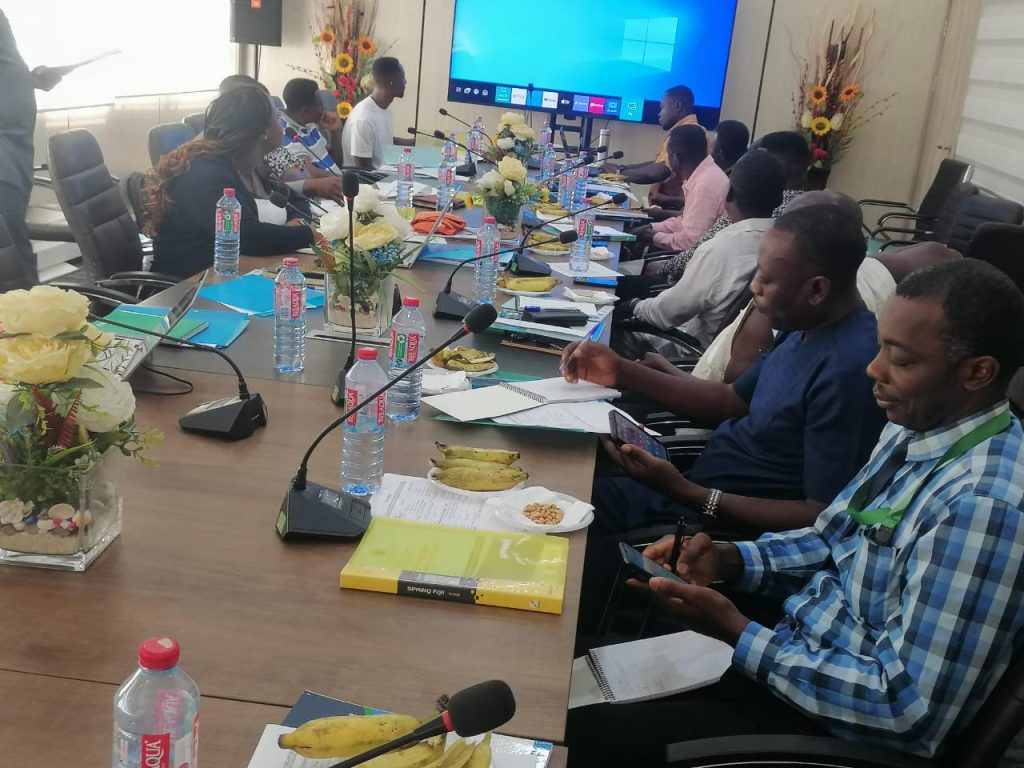By Patrick Biddah
Ghana, has stepped up its effort at fighting the canker of child labour, with an elaborate plan of action targeted at community collaboration .
This National Plans Of Action ( NPA) which is the third since 2009, is geared towards fulfilling Agenda 8.7 of the Sustainable Development Goals( SDGs) which is to eliminate child labour by 2025.
In view of this, various stakeholders with the Ministry of Employment and Labour Relations, is taking the fight to the hinterlands of the country where these canker is prevalent among the fishing and farming communities.
Elaborating on the Accelerated Action Plan, the Assistant Chief Labour Offcer and Head of Child Labour Unit at the Labour Department, Madam Esther Ofori Agyemang, indicated that the new phase of the National Plan Of Action, is to take the elimination drive to the communities.

This according to her, will help to reach more affected victims and tosustain the fight since the communities themselves will be deeply involved.
Madam Ofori Agyemang, who was speaking at a Day’s Training on Child Labour and Forced Labour for members of the Social Mobilization Partners Against Child Labour ( SOMOPAC) in Accra on November 15, 2023, stressed the need to redirect the focus of the fight in order to be on the way to achieving the SDGs target
The nature of this community focus, she explained would be to empower opinion and community leaders with the skills and knowledge to develop their Action Plans on forced Labour and child protection which will discourage the engagement in any activity that will lead to child labour.
According to Madam Ofori Agyemang, although the focus is on the community , national will also collaborate with relevant institutions to create livelihoods and employment opportunities to prevent the likelihood of the children going back into child and forced Labour.
While engaging the community, she emphasized the fact that the right of the child and respecting their constitutional rights to school , good health and developing their morals remains the core principles for guiding the rolling out of this third national action plan.
The National Convener for the Social Mobilization Partners Against Child Labour (SOMOPAC), Mr Andrew Tagoe, shed more lights on the Child Labour Free Zones.
According to him, filling the gaps created after removing the children from engaging in child and forced Labour, remains one of the most effective ways of ending the canker .
“Over 4,000 children we removed from child and forced Labour activities increased when we went back to the farming and fishing communities. “, he recalled.
“ We thought through and introduced a new strategy which rendered the child labour activities unattractive to the children “, he underscored.
To safeguard the effort being made, he said a child labour free zones framework, has been developed.
This framework, he noted, is expected to promote the strengthening of systems and structures at the Metropolitan, Municipal and District Assembly and at community levels for elimination of all forms of child labour.
According to the Ghana Living Standards Survey, there are an estimated number of 21.8percent between five and 17 years involved in child labourin Ghana .
In all of these, the media is tasked to play the watchdog role of protecting and promoting the rights of the child.
An official from the Commission On Human Rights and Administrative Justice ( CHRAJ), Mr Mawuli Avutor, who gave a presentation on the concept of child labour, defined child labour to mean a child below 18 years, who is engaged in an activity hazardous to his health, safety and moral development.
He, therefore urged Ghanaians to different between an acceptable light work and child labour since the later always denies the child of school, health and risk to the life .




